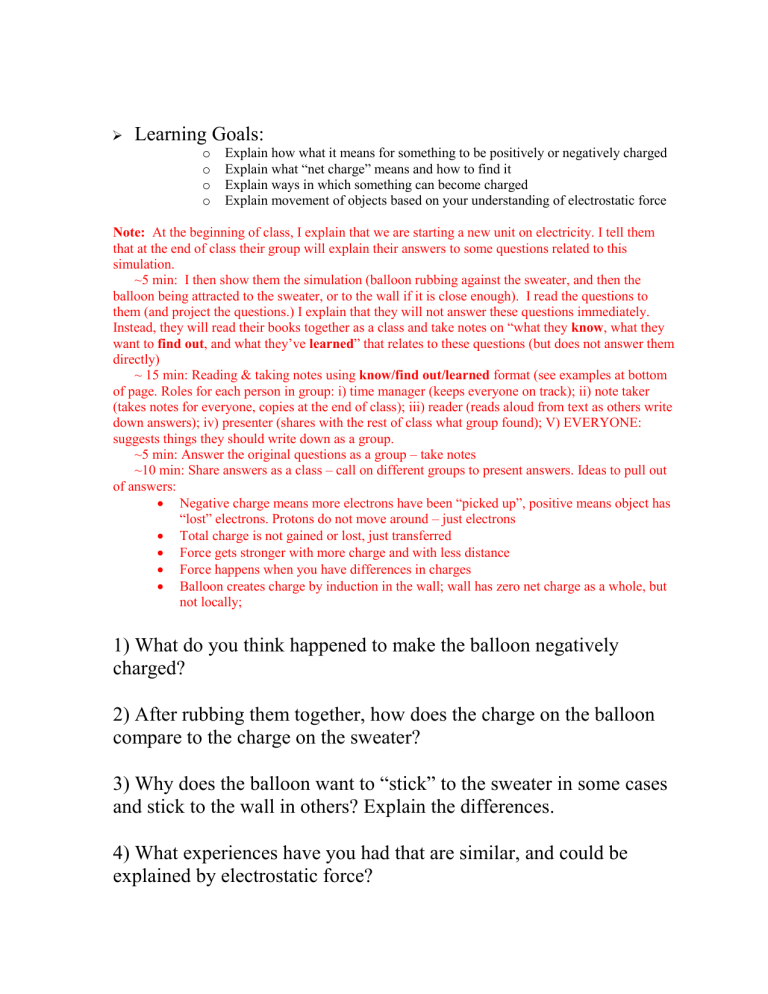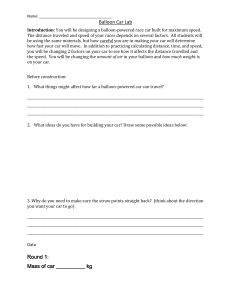
Learning Goals: o o o o Explain how what it means for something to be positively or negatively charged Explain what “net charge” means and how to find it Explain ways in which something can become charged Explain movement of objects based on your understanding of electrostatic force Note: At the beginning of class, I explain that we are starting a new unit on electricity. I tell them that at the end of class their group will explain their answers to some questions related to this simulation. ~5 min: I then show them the simulation (balloon rubbing against the sweater, and then the balloon being attracted to the sweater, or to the wall if it is close enough). I read the questions to them (and project the questions.) I explain that they will not answer these questions immediately. Instead, they will read their books together as a class and take notes on “what they know, what they want to find out, and what they’ve learned” that relates to these questions (but does not answer them directly) ~ 15 min: Reading & taking notes using know/find out/learned format (see examples at bottom of page. Roles for each person in group: i) time manager (keeps everyone on track); ii) note taker (takes notes for everyone, copies at the end of class); iii) reader (reads aloud from text as others write down answers); iv) presenter (shares with the rest of class what group found); V) EVERYONE: suggests things they should write down as a group. ~5 min: Answer the original questions as a group – take notes ~10 min: Share answers as a class – call on different groups to present answers. Ideas to pull out of answers: Negative charge means more electrons have been “picked up”, positive means object has “lost” electrons. Protons do not move around – just electrons Total charge is not gained or lost, just transferred Force gets stronger with more charge and with less distance Force happens when you have differences in charges Balloon creates charge by induction in the wall; wall has zero net charge as a whole, but not locally; 1) What do you think happened to make the balloon negatively charged? 2) After rubbing them together, how does the charge on the balloon compare to the charge on the sweater? 3) Why does the balloon want to “stick” to the sweater in some cases and stick to the wall in others? Explain the differences. 4) What experiences have you had that are similar, and could be explained by electrostatic force? 2 min: Write down what you already know as a group 2 min: Write down what you want to find out. 15 min: Write down what you learned – about 5 min for each section: 32.1 (p.500-501) 32.4 (p.508 – just the first 2 paragraphs) 32.6 (p.510) EXAMPLES of the “know, find out, learned” (KFL) format:



